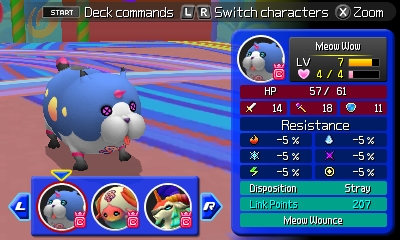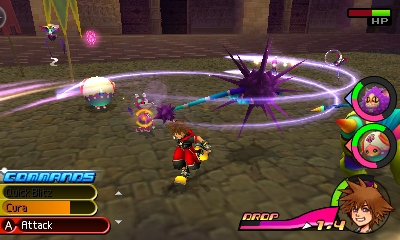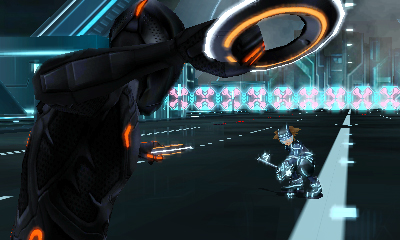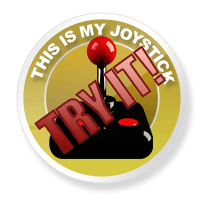Reviews
Kingdom Hearts 3D: Dream Drop Distance
September 18, 2012, Author: Andy Corrigan
I’m afraid that this is another of those reviews where I begin by admitting that I’ve never played a game in the relevant franchise before. This particular review represents a newcomer’s opinion to a series that’s already six instalments strong, and to others, it might have seemed a daunting task to come into the seventh game with fresh eyes.
Not for me though; the thing I truly love about my role here is that it I’ll often have to tackle games that I might not otherwise have had an interest in, and that’s certainly true of Kingdom Hearts, despite my penchant for Final Fantasy.
While my experience is limited, I know that for many, 2002’s Kingdom Hearts and its blending of both the Final Fantasy and Disney universes is very fondly thought of, managing to find favour with even the most bitter of cynics.
The series makes its 3DS debut with Dream Drop Distance (3D, get it?). Should you be handing over your ‘munny’?!
My Kingdom, my Kingdom for a legible story!
Apparently taking place just after the events of Kingdom Hearts: Re:Coded, the story follows series stalwarts, Sora and Riku. With trouble brewing in the form of an evil presence called Xehanort, their Master Yen Sid (Disney backwards!) sends them off to become fully-badged Keyblade Masters, so that they can be strong enough to fight off the threat. They set off on a small raft to their destination; however, they are swiftly attacked by Ursula, the Mer-Octopus-thing from Disney’s The Little Mermaid.
She’s defeated easily, but not before she knocks our duo into the ocean, sending them both into unconsciousness. As they drift deeper underwater, their Keyblades sentiently open the path to Traverse Town; one of seven worlds that are now in a dream state following (what I believe are) the events of previous games.
Upon awakening, Sora and Riku discover they are separated, but not only physically. There are two versions of each dream world, and they each occupy one version. They must individually open seven hidden keyholes scattered across as many dream worlds to become Keyblade Masters, if they’re ever to stop the evil of Xehanort.
If, like me, you’ve never played Kingdom Hearts before, you’re probably looking at that and wondering where to start. Dream Drop Distance does struggle to fully explain itself at the beginning, and it’s a tough game to ‘get’ in that respect. If you’re not au fait with the lore, it can feel like a story that’s stumbling through, and it’s regularly off-putting in the first few hours. It gets there eventually, though, almost becoming as heart-warming as it is silly.

"Don't make me shove that wand somewhere..."
Go with the Flowmation
With our heroic duo occupying the same environments, but different realities, rather than playing through the game once with Sora and then again with Riku, the game employs the ‘Drop’ system. This is essentially the Kingdom Hearts equivalent of Narcolepsy.
This means that as you play, starting with Sora, a bar on the bottom right of the top screen will deplete. Once time is up, Sora will ‘Drop’ into a sleep state and the game will switch over to Riku, who you’ll now control until his time is up. It starts to feel as if you’ve started two campaigns of the same game and then decided to play them concurrently by switching every ten minutes.
I have to admit, I initially hated this system. I’m one who enjoys the feeling of progression and my control of that was being taken away from me every 10-15 minutes. I also feared that it would leave exploration low on my list of priorities, seeing me rushing through the levels without finding all they had to offer.
Thankfully, these fears were put to rest pretty quickly, as the Drop system flows pretty naturally once you get a handle on how it works, and my need to explore wasn’t hampered in the slightest. Plus, although you’re exploring the same environments with both characters in most cases, it’s always in new and interesting ways. You can choose to drop before the time-limit is up too so, if you wanted, you could concentrate more on one character for a while, just by forcing the drop yourself whenever the switch happens.
Without prior point of reference, I can’t really explain the minutia of how the game’s combat differs to its predecessors. That said, I can see some similarities, however minor, to Final Fantasy VII prequel Crisis Core. By that, I mean that this is an action RPG with real-time combat, with one basic attack bolstered by additional attacks and powers that are switchable on the fly.
The basic, one-button attack assigned to the A button can be used to string simple combos together; they’re not devastating, but this is where you’ll deal the majority of your damage. The other attacks (magic, special moves, etc) are selected via Up and Down on the D-pad, and then actioned via the X button. Each of these powers (barring potion usage) requires a cool-down period to ensure you utilise at least some strategy and don’t just spam your favourite attacks.
The game is pre-set to cycle through these particular attacks once one is used, and frankly, this drove me up the bloody wall despite its good intentions. The idea is noble; to not leave you in a cooldown period on one attack at a time when you might need something a bit more special. Sadly, however, it causes other issues, especially when you need a quick heal and the options to do so are two or three button presses away.
It became especially grating in the final stages of boss fights, when I wanted to keep Health Potions on hand to cover me, only to find that an unwanted attack had been selected after my last potion usage. The cumbersome scrolling to get back to where I wanted would mean I had died before I even got there. Thankfully, you can turn off this auto-scroll in the menu, but then you have to be a lot more mindful of when to change attacks in the midst of battle. It’s a trade-off, certainly, but one worth taking if you prefer more control.
The good thing about this combat system is that the attacks that appear in this ‘Command Deck’ are entirely customisable. You’ll find and learn new attacks often throughout the game’s many worlds and you can tinker with and swap these out whenever you like in the menu, tailoring a selection that suits your play style. The remaining buttons, B & Y, act as jump and block respectively.

Isn't he cute?
Fights are made a little more exciting thanks to the introduction of Flowmotion; the ability to perform stylish and powerful manoeuvres by hitting the Y button when near usable elements of the environment or compatible enemies. This means that you could run at a wall, stick to it, jump off and then hit the nearest enemy with a powerful attack, or swing around a lamppost many times, repeatedly hitting any foe stupid enough to still walk towards you.
You can swing around larger enemies in the same fashion before throwing them across the level, doing damage to them and others in the process. At first this system feels horribly clunky and ungraceful. Yet with a little practice and time, it can provide devastating results in the flow of combat, although you might feel a little detached from what’s going on.
Rather than blessing you with a traditional JRPG party, this Kingdom Hearts takes a leaf out of Final Fantasy XIII-2’s book and has you using Pokémon Spirits. You see, rather than face the Heartless as before, you’ll fight creatures called Dream Eaters, and these remarkably cute monsters can be crafted for your own use (once you’ve found the recipe and recovered all the right ingredients, that is). You can have up to three Spirits in your party, but only two will ever be active at once; although you can switch between the three of them on the fly via the touchscreen. All Spirits are shared between the lead duo too, so they can both have the exact same companions in their own party.
Not only are they helpful, but they also have the game’s most interesting element of levelling up. By fighting alongside them and bonding with them, you’ll earn Link Points that can be spent on their individual skill trees, and here you can unlock many abilities and attacks that they’ll use to support you in combat.
As they fight, they’ll also build up a Link Meter which, when full, allows you combine their power with your current protagonist, but exactly how they’ll interact depends entirely on which protagonist. For example, with Sora the Spirits will physically help him; the bat-creature will pick him up, allowing him to fly around the arena for a short time and attack with quick darting motions, whilst another will spin around him acting as both a barrier and a hard-hitting attack.
For Riku, he will simply absorb his Spirit, making him incredibly powerful for a short period. Furthermore, if you have both your active Spirits on full Link Meters, you can unleash one massively powerful attack via the touchscreen, which is the closest thing you have to a Summon or Limit Break.
There are many ways to improve the Spirit’s bond with the protagonists, but the most novel is where the game performs its best Nintendogs impression. While you won’t need to feed or clean your Spirits, you can pet and play with them, earning you some Link points in the process. There are also items you can collect that can be used to play cutesy mini-games to further improve their stats. Most of the mini-games are surprisingly fun and not time-consuming in the slightest.
How far into this element you go is entirely up to you. I practically used the first three Spirits I created for the entirety of the first half before even thinking about changing them around, and I only delved in to pet them when I was a few Link Points shy of granting them new abilities.
To further help you out, each world has ‘Reality Shifts’ placed in convenient places around the map. These are optional abilities that are activated by approaching and swiping down on the touchscreen. Whether it’s the ability to use a catapult to reveal hidden areas in Traverse town, or the hacking mini-game in Tron that allows you to use parts of the hostile environment against your foes, each is uniquely designed for the world you’re in. You can often get by without using them, but they’re useful in exploring and in combat, if you like an unfair advantage here and there.
Unlike other Sqeenix RPGs, this isn’t one that’s steeped in intense difficulty nor does it challenge particularly when it comes to strategy. You’ll never really find yourself grinding solidly to hit that certain level required to clear an area, and while the combat is solid, hacking away at enemies with the occasional special move always seemed enough once you knew their patterns. Even when starting one new area slightly underpowered, you’ll generally be at the right level to beat it once you’ve explored and overcome all it has to offer. It does, however, get the balance between fun and progression just right, and there was never a point where I felt it outstayed its welcome.

The Spirits are fun additions, but they're useful too.
A whole new world…
Even as a newcomer to the series, it’s plain to see that Kingdom Hearts is a visual love letter to both Final Fantasy and Disney fans. On first impressions, it’s a brighter, cuter Final Fantasy, but leaving it at that does it a huge disservice. The Disney characters fit in flawlessly too; my preconceptions left me expecting their presence to look jarring when placed next to Sora or Riku, however, they very much look part of the Kingdom Hearts world.
The way that Disney locations are woven into the environment is nothing short of brilliant, and there are plenty of nods to Disney’s most timeless stories, even in the most subtle ways. Whether it’s epic battles outside the beautifully represented Notre Dame, or a simple fountain depicting an iconic scene from Lady and the Tramp, the game has you covered for fan service. Final Fantasy gets less representation, but fans will still welcome all the old magic names and the sight of Moogle as the Shopkeeper.
The 3D usage is understated but effective, and it’s become one of the few games on the 3DS where I found myself leaving the 3D slider firmly up. It’s not an element that aids gameplay as it did in Super Mario 3D Land for example, but it does add a little something extra to the experience.
Fantasia!
The game somehow manages to capture the enchanting melodies of both franchises’ musical styles, as pitch-perfect composition scores every facet of the game. The soundtrack here manages to suit both elements so perfectly, in fact, that I found it a massive surprise to discover that there weren’t actually any licensed tracks on the cartridge at all, outside of some classical music used to great effect towards the end game.
While the tone is as campy and melodramatic as you expect from Square, the voice acting is generally enjoyable thanks a Hollywood cast, featuring the likes of Haley Joel Osment, Leonard Nimroy, and Hayden Panettiere. The regular Disney trio of Tony Anselmo, Bret Iwan and Bill Farmer (who I met this year!) are in typically good form as Donald, Mickey and Goofy, providing plenty of humorous moments from the halfway point onwards.

Sora visits the digital world!
Dare to dream?
For the Kingdom Hearts first timer like me, Dream Drop Distance can prove to be a bit of a struggle to get into. You’re already at a disadvantage not knowing the major players, and the fractured structure makes it especially tough to recognise whether you’re missing key back story or whether the game is being intentionally ambiguous through artistic license.
If you can stick with it for the first few hours, though, it’ll unfurl and slowly win you over, thanks to its solid combo of charming characters, iconic locales and mechanics that are just about robust enough to back it all up with. For the life-long Kingdom Hearts fan, you’ll likely be in your element.
Despite its vague beginning and a couple of control issues, I found Dream Drop Distance to be an enjoyable action JRPG, one that I’m entirely happy to recommend, although not quite as an essential purchase.
Platforms: 3DS | Tagged Ansem, Axel, Disney, Donald Duck, Goofy, Kingdom Hearts, mickey mouse, Pinocchio, Quasimodo, Riku, Sora, The Hunchback of Notre Dame, The World Ends With You, tron, Ursula, Xehanort, Yen Sid



